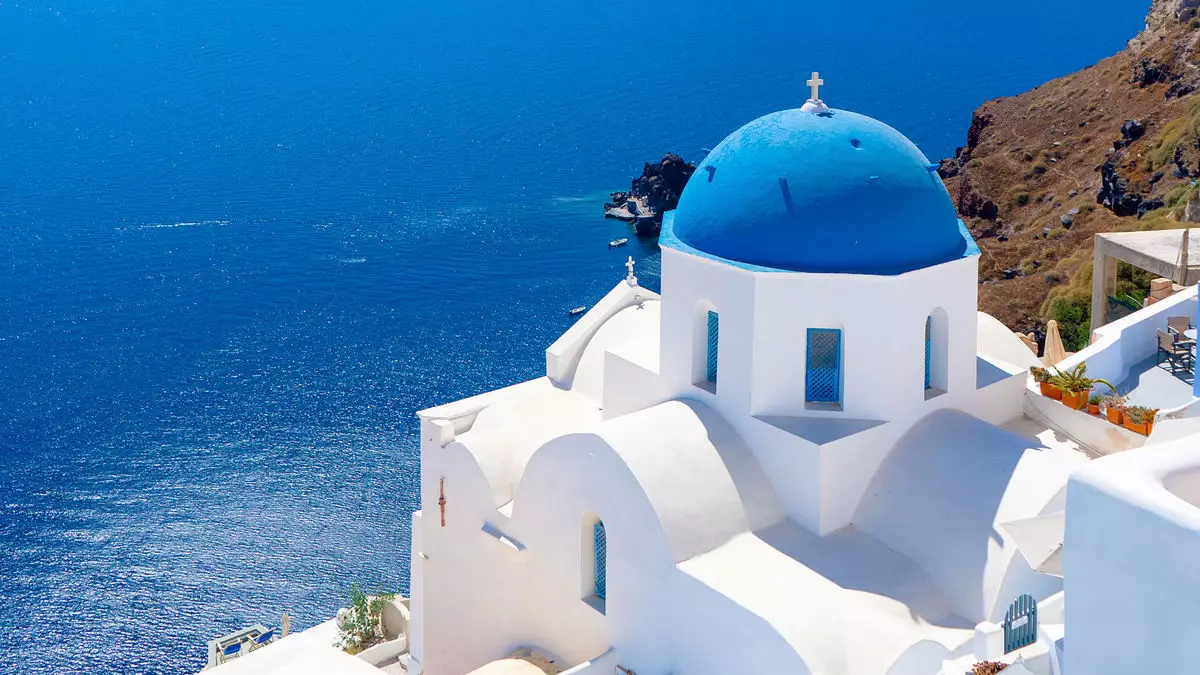In late January, the picturesque Greek island of Santorini, famed for its stunning sunsets and whitewashed buildings, became the focal point of geological concern. The University of Athens’ crisis management committee reported that this beloved tourist destination has been rattled by a swarm of seismic activity, registering thousands of tremors over the course of just over two weeks. While most of these quakes were of relatively minor magnitude, such a persistent series has raised alarms among scientists and government officials alike. These developments underscore the importance of monitoring the seismic dynamics in a region historically marked by volcanic activity.
The earthquakes, which peaked with magnitudes reaching as high as 5.2, represent a significant geological phenomenon and have led authorities to declare a state of emergency on the island. With this announcement came the mobilization of extensive resources, including rescue teams supplemented by advanced technology like drones and sniffer dogs. Additionally, the coast guard and navy are on heightened alert, ready to respond if conditions worsen.
The swirling concerns and the potential for a larger earthquake have prompted many residents and tourists to evacuate. The situation has also caused significant disruptions in everyday life; schools on Santorini and surrounding islands were ordered to close for the week to ensure the safety of students. With such extensive evacuations, the once-vibrant island is now marked by a stark sense of unease.
Health facilities in Santorini are bolstering their readiness for emergencies, reflecting the potential toll that a significant earthquake could take on the population. The Deputy Health Minister, Marios Themistokleous, emphasized the need for preparedness against natural disaster scenarios. Health workers recently undertook evacuation drills to ensure staff readiness, which illustrates an acute awareness of the necessity for rapid response in times of crisis. Such measures are critical not only for the safety of residents but also for the thousands of tourists who flock to Santorini annually.
Scientists have intensified their monitoring of the earthquake swarm, studying the pattern of quakes that has unfolded between Santorini and the neighboring island of Amorgos. This continuous tremor activity presents a complex scenario that may or may not lead to a more significant seismic event. The uncertainty is palpable; experts cannot definitively say if this series represents a precursor to a larger earthquake or if it will continue with minor tremors for an extended period.
Over 12,000 earthquakes have been recorded since January 26, with an astonishing 109 occurring in just one day. This level of activity is unusual even for Greece, which is situated in a tectonically vibrant region, characterized by frequent seismic events. The patterns currently observed deviate from the norm, signifying a possible shift or response within the geological structures that fuel these disturbances.
Understanding the geological history of Santorini provides context for the current events. The island was transformed dramatically by one of the largest volcanic eruptions in recorded history, reshaping its landscape into the crescent form we see today. This historical perspective raises considerations about the potential for future eruptions or seismic events, given the area’s volatile nature.
As scientists continue to deploy new surveying equipment to gather data, collaboration with government officials is key to formulating effective response strategies. The convergence of academic research and practical emergency planning highlights a critical intersection of science, safety, and public policy.
While the current situation on Santorini is concerning, it also serves as a reminder of the region’s geophysical challenges. Monitoring the coming days and weeks will be crucial, both for predicting the likelihood of larger seismic events and for ensuring the safety of all those who call this unique island home.


Leave a Reply